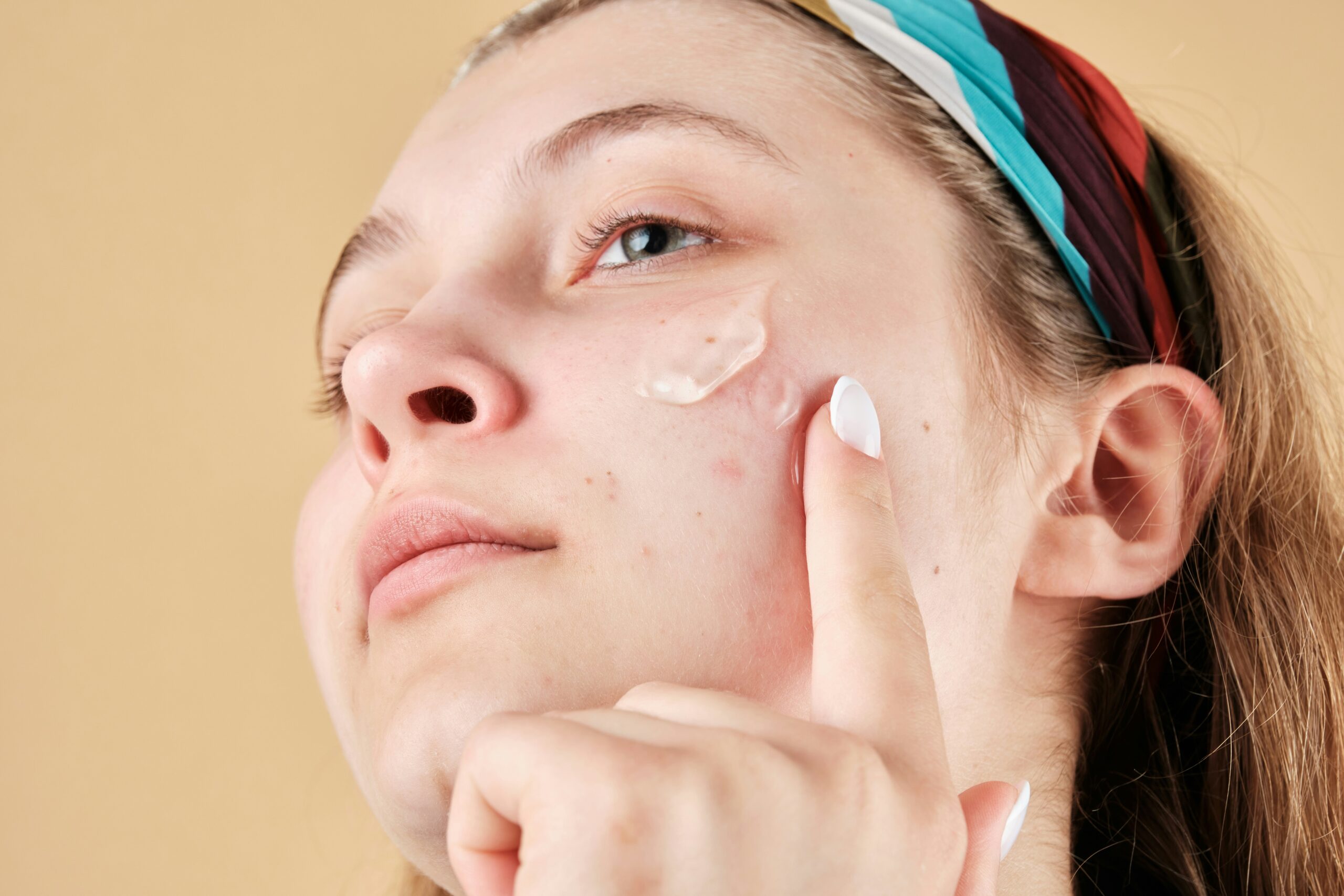2025 will see a seismic shift in how we approach skincare: personalization meets sustainability, and technology merges with nature. As you scroll through social feeds, you’ll notice fewer one-size-fits-all solutions and more DIY recipes tailored to individual needs. Environmental consciousness has also skyrocketed—meaning sustainable/clean beauty takes center stage.
2. Trend #1: Personalized Serums and Custom Blends
Gone are the days of generic serums. In 2025, everyone is mixing vitamins, antioxidants, and active ingredients in precise ratios—just for their skin’s unique profile.
2.1 How to Create Your Own Customized Serum
- Start with a Base Oil: Choose lightweight, non-comedogenic oils like fractionated coconut oil or squalane.
- Add Targeted Actives: For brightening, mix in a few drops of Vitamin C (ascorbic acid). To fight fine lines, incorporate bakuchiol (a plant-based retinol alternative).
- Balance pH: If you’re adding acids (like AHAs), make sure to dilute in distilled water or hydrosol to maintain a pH of 3.5–4.5.
- Test Patch: Apply to a small area behind your ear or jawline to check for irritation.
2.2 Key Ingredients to Look for in 2025
- Niacinamide + Peptides: Boost collagen and refine texture.
- Bakuchiol: Gentle, plant-based retinol alternative with minimal irritation.
- Vitamin C + Ferulic Acid: Brightens, fights free radicals.
- Hyaluronic Acid Fragments: Penetrate deeper layers, not just surface hydration.
3. Trend #2: Sustainable/Clean Beauty Takes Center Stage
Consumers no longer tolerate long ingredient lists filled with “mystery” chemicals. Clean beauty in 2025 emphasizes minimal, transparent formulas—and packaging that doesn’t cost the earth.
3.1 DIY Clean Beauty Recipe: Zero-Waste Face Oil
- 1 oz Jojoba Oil (recycled glass bottle)
- 5 drops Rosehip Seed Oil (cold-pressed, organic)
- 3 drops Lavender Essential Oil (therapeutic grade)
- 2 drops Frankincense Essential Oil
- Combine oils in a sterilized, reusable glass bottle.
- Label the date and store away from direct sunlight.
- Apply 2–3 drops on damp skin as a PM boost.
3.2 Eco-Friendly Packaging Hacks
- Refillable Glass Jars: Clean and reuse old serums, replacing the dropper head only.
- Compostable Labels: Switch to paper-based or plantable seed paper stickers.
- DIY Biodegradable Pouch: Convert old cotton T-shirts into small pouches for bar cleansers—no plastic necessary.
4. Trend #3: Microbiome-Focused Products
Your skin’s microbiome—a colony of good bacteria—gets more attention than ever. In 2025, we’re seeing formulas (and DIY masks) that nurture these beneficial microbes.
4.1 Understanding Your Skin Microbiome
- pH Balance: A healthy microbiome thrives around a pH of 4.5–5.5.
- Barrier Function: Good bacteria produce antimicrobial peptides to stave off pathogens.
- Signs of Imbalance: Dry patches, recurrent acne, or sensitivity often signal a disrupted microbiome.
4.2 DIY Probiotic Mask for Balanced Skin
- 2 tbsp Plain Kefir (rich in Lactobacillus)
- 1 tsp Manuka Honey
- 1 tsp Papaya Enzymes (freshly mashed)
- Mix into a smooth paste.
- Apply to face for 10–15 minutes.
- Rinse with lukewarm water, pat dry.
5. Trend #4: Blue Light Protection
With screens glued to our faces, blue light exposure has become a real concern. In 2025, we’ll see more products—and DIY solutions—aimed at shielding skin from digital-age damage.
5.1 Why Blue Light Matters More Than Ever
- Oxidative Stress: Blue light (HEV) can penetrate deeper than UV-A, generating free radicals.
- Hyperpigmentation: Extended screen time correlates with uneven tone and dark spots.
- Digital Pollution: Your skin’s natural barrier weakens under constant HEV exposure.
5.2 At-Home Blue Light Blocking Face Mist
- ½ cup Distilled Water (cooled)
- 1 tsp Zinc Oxide Powder (micronized, non-nano)
- 1 tsp Green Tea Extract (antioxidant-rich)
- 2 drops Vitamin E Oil
- Vigorously shake in a sterilized spray bottle.
- Mist over face and neck nightly or before extended screen work.
6. Trend #5: At-Home Skincare Devices
High-tech devices once confined to spas are now closet-ready. Affordable LED masks, microcurrent rollers, and ultrasonic infusers let you get pro results from your bathroom.
6.1 Top 3 Affordable Tools for 2025
- LED Mask (Red + Near-Infrared): Promotes collagen, reduces inflammation.
- Microcurrent Facial Wand: Tones muscles, lifts contours.
- Ultrasonic Infuser: Enhances product penetration up to 400%.
6.2 How to Safely Use LED Masks at Home
- Cleanse Thoroughly: Remove all makeup/oil before use.
- Duration: 10–20 minutes, 2–3 times per week.
- Distance: Mask should sit flush; do not force it onto face.
7. Trend #6: Skin Barrier Repair Becomes Non-Negotiable
If your barrier is compromised (redness, stinging, moisture loss), nothing else will “work.” Repairing and reinforcing barrier function is the cornerstone of 2025’s DIY routines.
7.1 Identifying Barrier Damage
- Redness & Itchiness: Often means lipids are stripped away.
- Dehydration Stripes: Dry patches that appear after product application.
- Tightness & Flakiness: Common after over-exfoliation or harsh cleansers.
7.2 DIY Ceramide-Boosting Routine
- 1 tsp Emulsifying Wax
- 2 tbsp Shea Butter (rich in fatty acids)
- 1 tbsp Squalane Oil
- 5 drops Vitamin E Oil
- Melt wax + shea butter over low heat.
- Stir in oils off heat until emulsified.
- Pour into a small jar and let cool.
- Use nightly as a protective barrier cream.
8. Trend #7: Probiotic and Adaptogen-Infused Masks
Adaptogens like ashwagandha and ginseng, combined with probiotics, help skin adapt to stressors—pollution, cortisol spikes, and blue light.
8.1 Benefits of Probiotics and Adaptogens
- Probiotics: Maintain healthy flora, reduce inflammation.
- Adaptogens: Modulate cortisol, strengthen resilience against environmental stress.
8.2 Homemade Adaptogen Herb Blend Mask
- 1 tbsp Ashwagandha Powder
- 1 tbsp Tulsi Leaf Powder (Holy Basil)
- 2 tbsp Yogurt (with live cultures)
- 1 tsp Aloe Vera Gel
- Mix until smooth.
- Apply 15 minutes, rinse with lukewarm water.
- Refrigerate leftovers for extra cooling.
9. Trend #8: Minimalist Routines & Skinimalism
“More is more” is out—“less is best” is in. Skinimalism prioritizes multi-purpose products and stripped-back steps, especially beneficial for sensitive or time-crunched lifestyles.
9.1 Why Less Is More in 2025
- Reduced Irritation: Fewer actives minimize sensitivity.
- Cost-Effective: Spending on multipurpose essentials rather than 10-step kits.
- Clarity: Simplified routines are easier to track for results.
9.2 3-Step Morning Routine for Busy Professionals
- Gentle Hydrating Cleanser: No sulfates, fragrance-free.
- Multitasking Serum: Niacinamide + hyaluronic acid combo.
- Mineral Sunscreen: SPF 50, broad spectrum (zinc oxide).
10. Trend #9: Waterless Skincare Formulations
As water scarcity intensifies, brands pivot to waterless balms, solid cleansers, and powdered serums. DIY waterless products last longer, avoid preservatives, and boast higher ingredient potency.
10.1 Advantages of Waterless Products
- Concentrated Actives: No dilution means more potent delivery.
- Longer Shelf Life: Fewer preservatives needed.
- Eco Impact: Reduced shipping weight, less plastic in the supply chain.
10.2 DIY Solid Cleanser Bar Recipe
- ½ cup Coconut Oil (virgin)
- ¼ cup Olive Oil (extra virgin)
- 1/4 cup Sodium Hydroxide solution (handled with caution)
- 10 drops Essential Oil (tea tree or lavender)
- Combine oils, slowly add lye solution.
- Stir and pour into silicon mold.
- Allow to cure 4–6 weeks before use.
11. Trend #10: At-Home Cryotherapy and Cooling Techniques
Cryotherapy isn’t just for celebs—portable ice rollers, cryo wands, and frozen jade gua sha stones can help tighten pores and reduce puffiness in minutes.
11.1 The Rise of Cold Therapy in Skincare
- Vasoconstriction: Tightens blood vessels, reducing redness.
- Lymphatic Drainage: Helps de-puff under-eye areas.
- Collagen Boost: Brief cooling can stimulate collagen production.
11.2 DIY Ice Roller and Quick Cryo Tip
- DIY Ice Roller: Freeze a small metal or glass roller head; wrap in a thin cloth.
- Quick Cryo Tip: Dip jade gua sha stone in cold water for 2 minutes, then glide over cheekbones and jawline for 5–7 minutes.
2025’s skincare landscape revolves around personalization, sustainability, and technological integration—all while empowering you to DIY from home. By embracing skincare trends 2025, you’re not only future-proofing your glow but also contributing to cleaner, more responsible beauty habits. Whether it’s crafting your own personalized serum or ditching water-based products in favor of waterless skincare, there’s a trend tailored to you. Start experimenting safely, patch-test diligently, and watch your skin thrive.
14. FAQs
Q1: Are DIY skincare routines safe for all skin types?
A1: Most DIY recipes use natural ingredients, but everyone’s skin is unique. Always do a patch test behind the ear or jawline before full-face application, especially if you have sensitive or allergy-prone skin.
Q2: How often should I use an at-home LED mask?
A2: Aim for 2–3 sessions per week, 10–20 minutes each. Overuse can irritate skin; follow manufacturer guidelines and adjust based on how your skin responds.
Q3: Can waterless skincare truly replace traditional water-based products?
A3: Yes—waterless formulations concentrate actives and often require fewer preservatives. However, if your skin thrives on water-based hydration, you can incorporate both types for a balanced routine.
Q4: How do I know if my skin microbiome is disrupted?
A4: Signs include persistent dryness, redness, breakouts, or increased sensitivity. If you suspect imbalance, incorporate gentle, pH-balanced cleansers and postbiotics to restore harmony.
Q5: Is blue light protection only necessary for heavy screen users?
A5: Even occasional screen exposure produces blue light. If your lifestyle involves screen time—work, social browsing, or streaming—incorporating blue light–blocking serums or mists can mitigate oxidative stress over time.

Hi! I’m Katia Luján, an SEO and Content Marketing expert with over 10 years of experience helping websites grow organically and get approved by Google AdSense.
I’ve worked in Google’s Trust & Safety team for AdSense and have helped more than 100 websites comply with monetization policies. Currently, I’m the strategist behind Buzzlix—creating SEO-optimized, high-quality content on beauty, skincare, and self-care.
I’m passionate about empowering others with actionable, sustainable, and accessible beauty content.


Leave a Reply